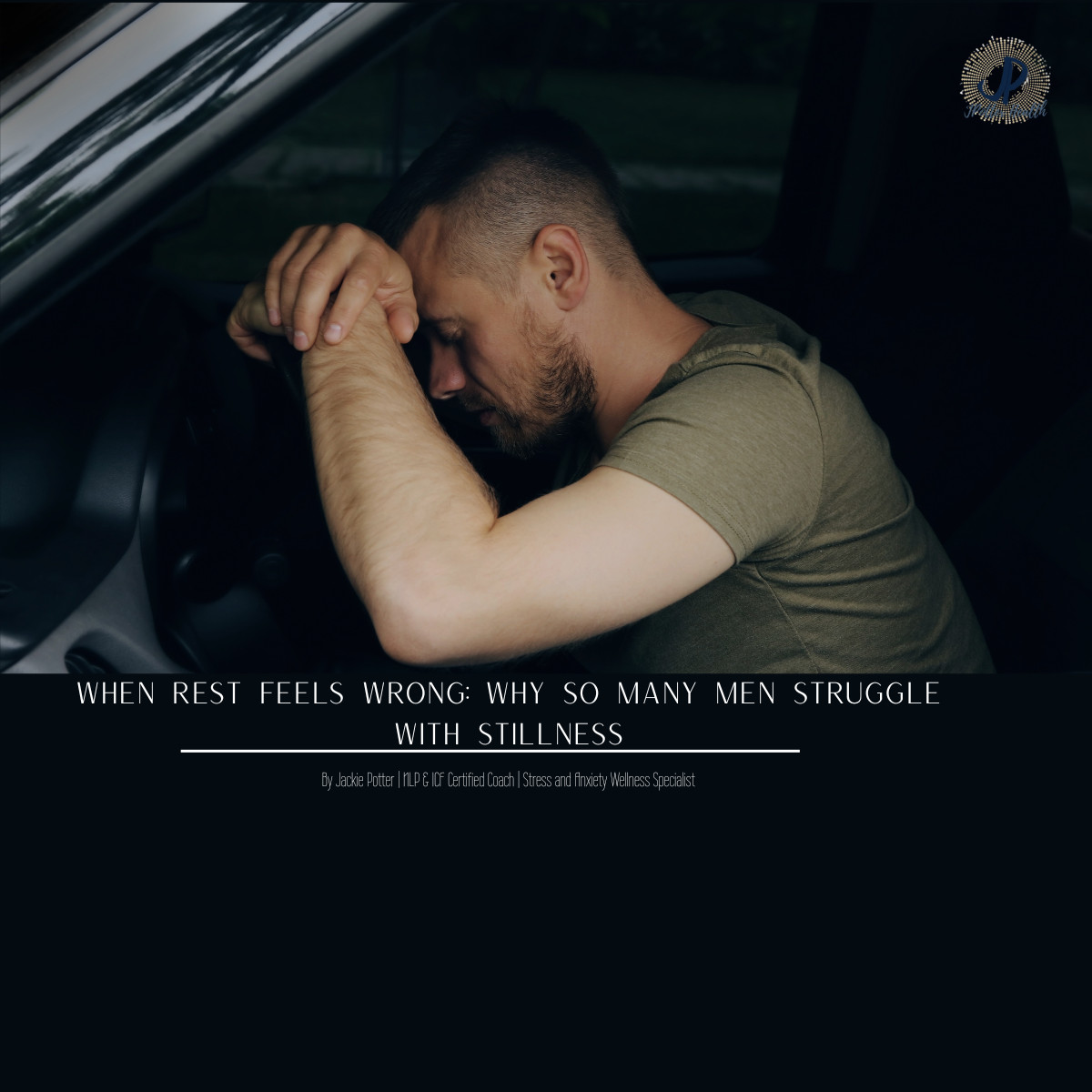
He pulled into the driveway just after 6:30 PM.
Emails still buzzing.
Dinner smells filling the air.
A toddler screaming, a five-year-old laughing through the open front window.
Emails still buzzing.
Dinner smells filling the air.
A toddler screaming, a five-year-old laughing through the open front window.
He stayed in the car for a few seconds longer, gripping the steering wheel.
Because stepping into the house didn’t mean stepping into rest —
it meant stepping into the second shift.
Because stepping into the house didn’t mean stepping into rest —
it meant stepping into the second shift.
Dinner. Dishes. Bath time. Story time. Bedtime.
Then, if there was any energy left, a quick conversation with his wife about everything they still needed to manage.
Then, if there was any energy left, a quick conversation with his wife about everything they still needed to manage.
Only when the house was finally quiet could he sit down.
And when he did — when he finally stopped moving —
the silence felt heavier than the work ever had.
And when he did — when he finally stopped moving —
the silence felt heavier than the work ever had.
Instead of feeling peace, he felt an anxious restlessness.
A gnawing pressure that he should be doing something.
Getting ahead. Fixing something. Being better.
A gnawing pressure that he should be doing something.
Getting ahead. Fixing something. Being better.
Because somewhere deep down, like so many millennial men, he had been taught:
Busy equals worthy.
Stillness equals weakness.
Busy equals worthy.
Stillness equals weakness.
Why So Many Men Feel Uncomfortable with Stillness
This story is not uncommon.
It's the silent mental battle countless millennial men face every day, caught between career pressure, young families, and overwhelming schedules.
It's the silent mental battle countless millennial men face every day, caught between career pressure, young families, and overwhelming schedules.
But why does resting — something essential for survival — feel so wrong?
The answer lies deep in brain science.
When the body slows down, the brain’s amygdala — the ancient threat detection system — can misinterpret the stillness as a potential danger.
- If you’re moving, fixing, solving problems, your brain says: “Safe.”
- If you’re sitting still with no task at hand, it says: “Potential threat.”
This triggers the fight-flight-freeze response:
- Heart rate spikes.
- Breathing becomes shallow.
- Muscles tighten.
- The logical part of the brain (the prefrontal cortex) goes slightly offline.
This is the same survival wiring that helped our ancestors avoid predators.
But today, instead of saber-toothed tigers, it's unpaid bills, work deadlines, and late-night texts about tomorrow’s schedule.
But today, instead of saber-toothed tigers, it's unpaid bills, work deadlines, and late-night texts about tomorrow’s schedule.
When you combine survival brain patterns with modern expectations —
Be a top performer. Be a present father. Be an emotionally available husband. Be everything to everyone —
it’s no wonder that sitting still feels more like a threat than a reward.
Be a top performer. Be a present father. Be an emotionally available husband. Be everything to everyone —
it’s no wonder that sitting still feels more like a threat than a reward.
Real Strength Isn’t Found in Running Faster
If you’ve felt the panic of sitting still, if you’ve reached for your phone instead of facing the quiet — you’re not alone.
And you’re not failing.
And you’re not failing.
You are running an ancient, overprotective survival program —
one that kept your ancestors alive, but isn’t designed for managing today’s world.
one that kept your ancestors alive, but isn’t designed for managing today’s world.
Stillness isn’t failure.
Rest isn’t weakness.
They’re skills.
Rest isn’t weakness.
They’re skills.
And just like any skill, learning to manage anxiety around stillness builds a deeper kind of mental resilience —
the kind that creates lasting strength, not just short-term survival.
the kind that creates lasting strength, not just short-term survival.
How to Reclaim Calm and Redefine Strength
✅ Notice and Name the Discomfort:
When you feel the urge to move, fix, or escape, pause.
Label it:
"This is survival wiring, not real danger."
When you feel the urge to move, fix, or escape, pause.
Label it:
"This is survival wiring, not real danger."
✅ Redefine Rest as Maintenance:
Shift your internal dialogue:
"Rest isn’t wasted time — it’s how I sharpen for the battles that matter."
Mental resilience depends on recovery.
Shift your internal dialogue:
"Rest isn’t wasted time — it’s how I sharpen for the battles that matter."
Mental resilience depends on recovery.
✅ Practice the Two-Minute Stillness Drill:
- Sit with your feet planted firmly.
- Hands relaxed, open.
- Inhale slowly for four seconds, exhale for six.
- With each exhale, repeat internally: “It is safe for me to be still.”
Start with two minutes. Build up over time.
✅ Use Bilateral Grounding if Anxiety Rises:
When restlessness spikes, try bilateral tapping:
When restlessness spikes, try bilateral tapping:
- Tap your left thigh, then your right thigh, slowly and rhythmically.
- Or gently tap your left shoulder, then right, back and forth.
Bilateral stimulation calms the survival brain by engaging both hemispheres, pulling you back into the present moment naturally.
✅ Focus on Progress, Not Perfection:
Managing anxiety around rest is a process, not a one-time fix.
Every moment you stay present, even for a few breaths longer than last time, is a victory.
Managing anxiety around rest is a process, not a one-time fix.
Every moment you stay present, even for a few breaths longer than last time, is a victory.
Final Thought
You are not what you produce.
You are not only as valuable as your last achievement.
You are not only as valuable as your last achievement.
You are allowed to rest.
You are allowed to breathe.
You are allowed to exist without constantly proving your worth.
You are allowed to breathe.
You are allowed to exist without constantly proving your worth.
Real strength isn’t in running harder.
It’s in knowing when to stand still —
and knowing you’re still enough.
It’s in knowing when to stand still —
and knowing you’re still enough.
If you found this helpful, I invite you to sign up for my Anxiety Busting Tips Newsletter [insert link] for weekly science-backed strategies to build resilience, manage anxiety, and navigate life’s busiest seasons with strength.
Feel free to share this post with a man in your life who deserves to know:
He is enough — even in the stillness. 🛡️
Feel free to share this post with a man in your life who deserves to know:
He is enough — even in the stillness. 🛡️
#MensMentalHealth #AnxietyManagement #MentalResilience #StrengthInStillness #MillennialLife #BrainScience















0 Comments